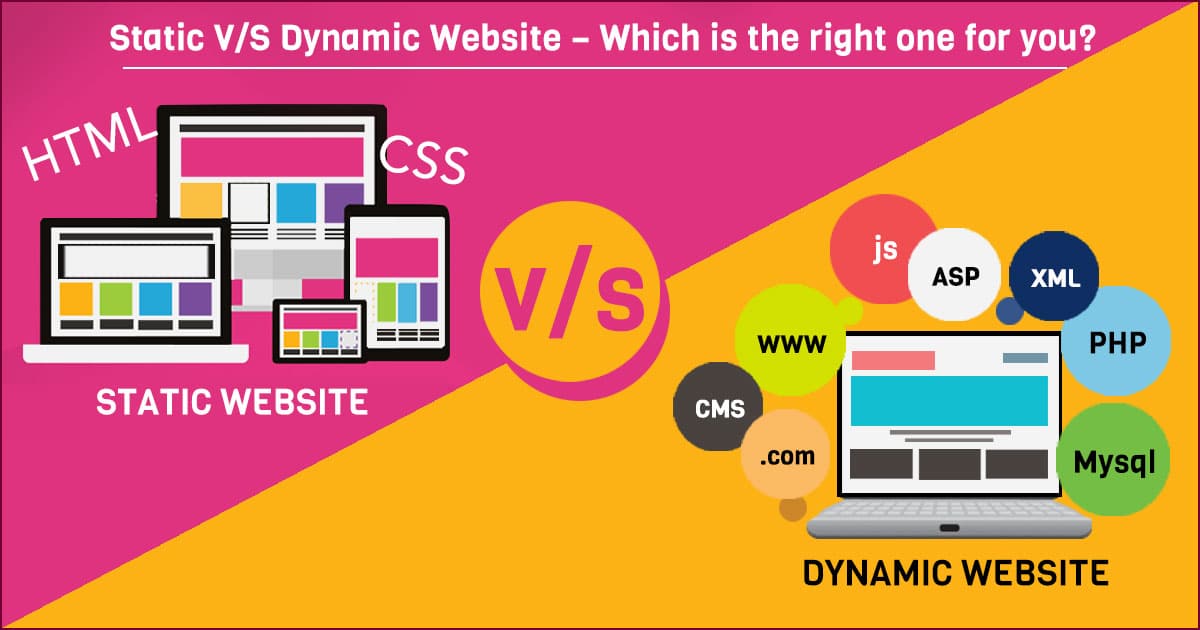Websites lay the foundation for an online business. Websites need to be well-made and strong enough to make a great impact and take your online business to new heights. The type of website chosen plays a very important role in determining the forte and success of your online business. A large number of parameters care used to categorize various websites, but here will focus on the types of websites depending on their nature and function.
In general there are two types of websites based on the nature of development and the functions they perform, they are- Static website and Dynamic website.
What Is Static Website?
Technically a static website is developed in HTML and CSS languages. They are easy to develop and are cost-efficient. They are the best option for small businesses looking to develop their websites. A static website looks more like an online brochure having hyperlinks which help the visitors to view different pages and products on the screen. Once the webpages on a static website are developed they will remain static and changes cannot be made without coding skills. Which means a business owner wanting to make changes on a static website, will need the help of a website developer to make even the smallest of updates and changes.
Advantages
- Static Websites are quick and easy to develop
- They are extremely cost efficient in nature and inexpensive to develop
- To host these websites on the web costs less as compared to the dynamic ones.
Disadvantages
- Requires web development expertise to update and make changes to website
- We can add text, images, videos, and hyperlinks to the web content but no other special functions can be performed by a static website can perform.
- The web content can get stagnant in the longer run and is difficult to remain updated
What Is Dynamic Website?
A dynamic website is developed and built by adopting advanced server technologies like PHP, JavaScript or ASP. Dynamic web page means that the webpages are interactive in nature and animatedly change according to the time, geography and the user type. Dynamic websites help in building more user-driven pages that can be changed depending on the user’s requirements. The content and information on a dynamic website’s page modifies according to the user commands.
Advantages:
- Dynamic website can be easily updated as per the needs and requirements of the business owner.
- Dynamic websites are interactive in nature and changes according to user’s behavior.
- They can be quickly and easily updated to become responsive in nature and can adjust to various screen sizes. This is not possible with a static websites.
- They offer a smoother navigation and lets the user move from one page to the other without any hassles or problems.
Disadvantages:
- Dynamic websites are very expensive to develop and cost a lot of money to host them. However, once they are developed they no additional cost would be required for any updates or changes.
- Using a complex technology and having a number of functions to perform, the dynamic websites become slower to process and load.
Both Dynamic and Static websites have a few advantages and disadvantages. The usefulness of both types of websites depend on the specific needs of the business. Some businessmen will prefer simple and easy to use static websites, while others may prefer the rich-functionality and responsiveness of dynamic websites.
Velocity Consultancy is a professional Web Designing and Development Company providing comprehensive and cost effective web solutions for a wide range of website design & development services. We are dedicated in assisting small to medium sized businesses establish an online presence. We help our clients in harnessing the wide reach of the Internet by designing and developing web solutions which will help them in marketing their products to a larger audience.
Visit www.velocityconsultancy.com for more information and details.


